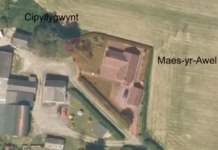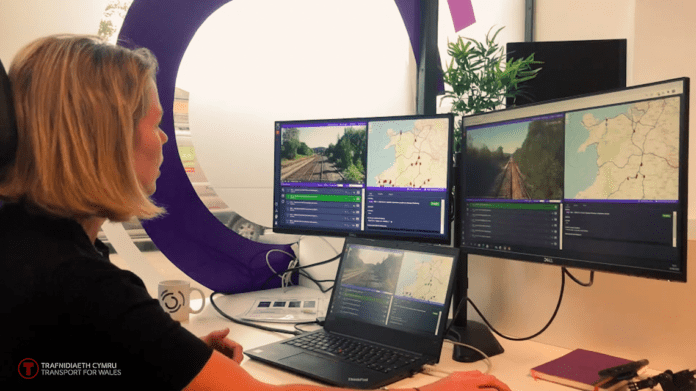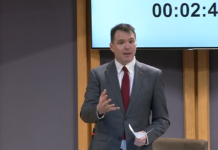
Transport for Wales and Network Rail are utilising the latest technology this autumn to prepare for a growing number of storms and bad weather caused by climate change.
Autumn is traditionally a very challenging time for the rail industry and in 2020 storms Ellen, Francis and Alex caused widespread disruption and included the wettest day on record since 1891.
Storms can have a serious impact on rail passenger services and replacement road transport, so TfW and NR have been working collaboratively to prepare for the challenges and minimise the risk to services.
Lee Waters MS, Deputy Minister for Climate Change, commented: “Climate Change is having a very real impact on the weather as we’ve seen with the unprecedented storms of the last few years, so I am pleased that TfW working with Network Rail are taking these measures, using the most up to date technology, to deal with the impact of severe weather on our rail network as we head into the autumn.”
Actions taken include:
- Identifying high-risk sites using Automated Intelligent Video Review (AIVR) footage on the front of trains and creating robust de-vegetation plans for each area.
- Creating a dedicated autumn control desk with double the resource of autumn 2020 and bigger frontline response teams working every day to identify and respond to issues quickly.
- Use of railhead treatment trains to blast away vegetation debris from tracks and the application of traction gel in sites where vegetation can cause low wheel-rail friction levels. This year there will be 57 Traction Gel Applicators in use.
- Contingency plans to mitigate service disruption in the event of a reduction in available train carriages.
- Removal of class 142 and 143 ‘Pacers’ from service which were the most vulnerable rolling stock in TfW’s fleet to adhesion related issues.
Transport for Wales Director for Planning and Performance, Colin Lea, said: “The autumn season presents significant challenges to the rail industry, and we work hard throughout the year preparing.
“Working within COVID guidelines and closely with Network Rail and valley lines maintenance colleagues, we have cleared concerning lineside vegetation, arranged rail treatment train runs and removed the old ‘Pacer’ trains, which were our most vulnerable trains when it came to adhesion-related issues at this time of year.
“Our staff will continue to work around the clock over the autumn period, and beyond, in some very testing environments to keep our customers on the move, with their safety at the heart of everything we do.”
Bill Kelly, route director at Network Rail Wales and Borders said: “Preparing for autumn is at the heart of our partnership with Transport for Wales.
“We work together throughout the year, managing vegetation in high risk areas and deploying innovative technology to treat the tracks. This year, we’ve also doubled the size of our Autumn Control Team to improve our response to incidents.
“With climate change increasingly affecting the transport network, from the Conwy Valley to Severn Estuary, we’re investing in schemes across Wales and Borders to build a more resilient railway.”

| [donate]
| Help keep news FREE for our readersSupporting your local community newspaper/online news outlet is crucial now more than ever. If you believe in independent journalism,then consider making a valuable contribution by making a one-time or monthly donation. We operate in rural areas where providing unbiased news can be challenging. |






















